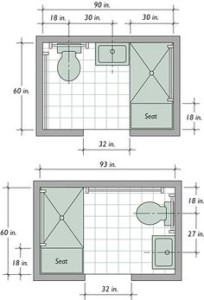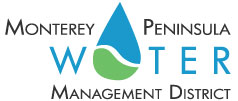 What is the second bathroom protocol?
What is the second bathroom protocol?
The second bathroom protocol allows an existing dwelling unit that has less than two bathrooms to add a second bathroom or add a bathtub/shower to a half bathroom (powder room) to create two full bathrooms in a dwelling unit that had a final building permit as of May 16, 2001. Water from the Jurisdiction’s allocation is not required for the second bathroom protocol. The second bathroom protocol shall be limited to the following fixtures: (a) a single toilet, (b) a single bathtub, tub/shower combination or single shower stall, and/or (c) one or two wash basins.
The second bathroom protocol does not apply to multi-family sites with four or more dwelling units. The second Bathroom cannot be used to add a bathroom to create an Auxiliary Dwelling Unit (ADU) or a Jr. ADU, it must be within the dwelling unit, and it cannot be designated as the Master Bathroom (Rule 24-A-4). The second bathroom is for convenience.
What is the procedure to add a bathroom using the second bathroom protocol?
The process to obtain a Water Permit to add fixtures remains the same under the second bathroom protocol, except that there is no debit from the jurisdiction’s allocation.
Here is a summary:
1. Plans are drawn by an architect/builder for the bathroom addition.
2. The plans must be submitted to the planning or building department of the jurisdiction where the property is located. (Contact the jurisdiction’s planning department for more information on the plan check process.)
3. A completed Residential Water Release Form and Water Permit Application with jurisdiction signature for approval of the project is required.
4. The approved plans and completed application are submitted to Monterey Peninsula Water Management District (MPWMD). Information about the District’s Covid-19 electronic submittal process can be found here. Applications for Water Permits are not accepted unless the Residential Water Release Form is signed by the jurisdiction and accompanied by approved plans. The Residential Water Release Form should indicate that the permit is being approved under the second bathroom protocol.
5. As a condition of the second bathroom protocol, applicants are required to sign two deed restrictions for recordation on the property title: One deed restriction details allowable water fixtures and limits use to two bathrooms in the dwelling unit; the second deed restriction grants MPWMD access to water consumption records.
6. When plans and the Residential Water Release Form are submitted to MPWMD, an inspection may be scheduled to verify the water fixtures on the property.
7. Deed restrictions are prepared and go through an extensive internal review process. The deed restrictions must have property owner signatures notarized, and returned to the Water District for recordation of the documents at the Monterey County Recorder’s office. Once the documents have been recorded, the final Water Permit will be issued.
8. The Water Permit process by MPWMD may take up to four weeks. If an inspection needs to be performed, the process may take longer depending on inspection scheduling and the ability to safely access the site. Capacity fees are charged for the addition of the bathroom fixture units (1 fixture unit = 0.01 acre-foot), plus $225 processing fee, plus deed restriction processing fees. Capacity Fees are annually adjusted July 1 and can be found in MPWMD Rule 24. Applicants must pay all fees before the permit is released. The District accepts credit cards (preferred) or a check.
9. Once the Water Permit is issued, the plans should be submitted to the building department of the appropriate jurisdiction to obtain the building permit. When the project is completed, a final inspection by the Water District is required to document the additional fixtures. This inspection is in addition to the building department’s inspection of the property. (Note: Carmel-by-the-Sea, Pacific Grove and Seaside currently require that MPWMD final the water permit before the building permit. During the Covid-19 pandemic, final inspections may be waived until it is safe to inspect the property, but please check with MPWMD.)
What are the retrofit requirements?
As a condition of any Water Permit to add a bathroom, additional toilets must be a maximum of 1.28 gallon per flush high efficiency toilet, all shower heads must flow at 2.0 gpm, and all faucets must have aerators that restrict the flow to 1.2 gpm. No credit is given for required retrofits.
Can the second bathroom protocol be used to add a bath if the one bath dwelling unit is demolished and rebuilt with two baths?
Yes. A documented Water Use Credit from MPWMD for the permanent abandonment (demolition) of a one bath dwelling unit issued prior to May 16, 2001 is regarded as an “existing” dwelling unit for 120 months following demolition. Reconstruction of a dwelling unit with the addition of a second bathroom under this protocol as long as the credit is valid.
If you have further questions, please contact the MPWMD Water Permits and Conservation office at (831) 658-5601.
